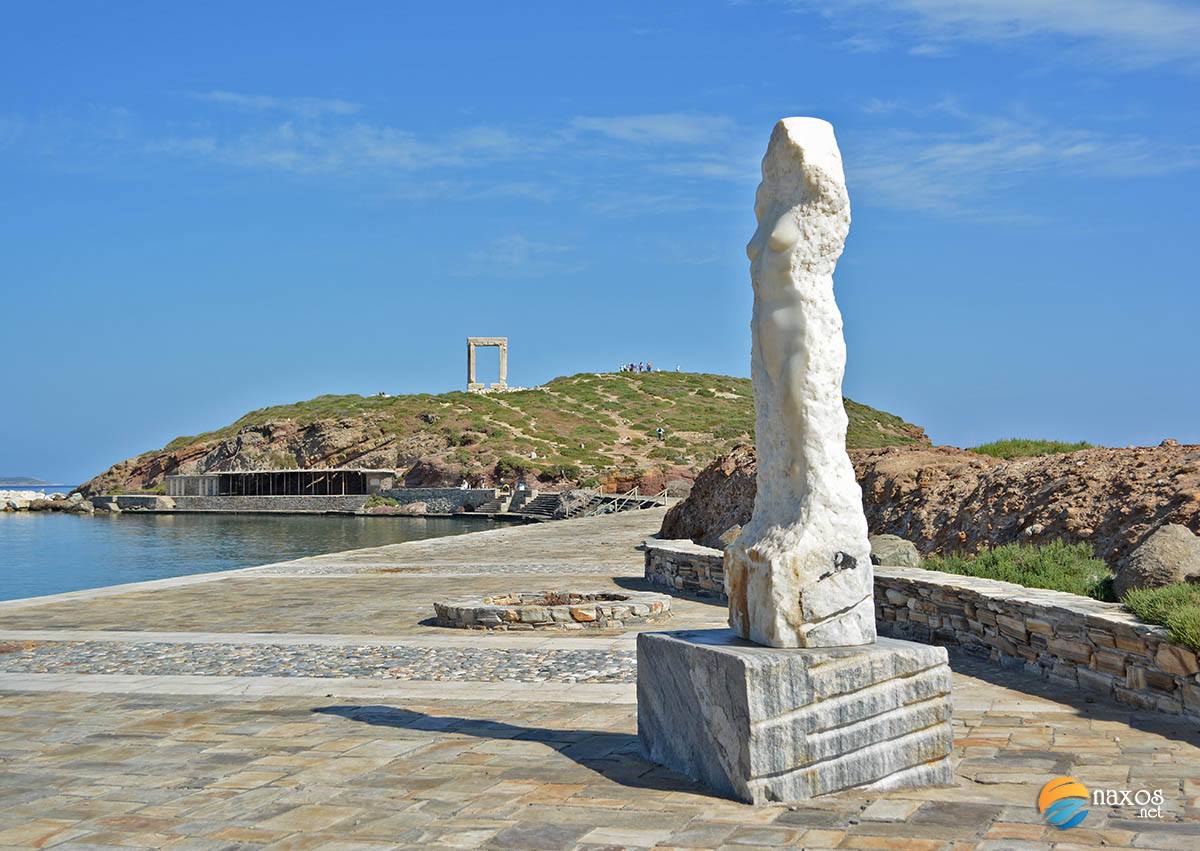The threads which link mythology to the island of Naxos are many. Zeus (the father of the gods), Semele, Dionysus, Ariadne, Demeter, Persephone, Iphimedeia, Pancratis, the giants Otus and Ephialtes are but a few of the names that figure in the action-packed legends surrounding the island. The people of Naxos worshipped Zeus the Melosios, protector of the flocks, and a temple was erected by the faithful in his honor on Mount Zas, which took its name from Zeus. The inscription "Mountain of Zeus the Melosios" can be seen carved on a rock there.
According to legend, the father of the gods was born in Crete but grew up on the island of Naxos, from where he set out to gain his Olympian throne.

Another epithet ascribed to him is Zeus Eubouleus, protector of the Naxians. Zeus, then, according to this myth, fell in love with Semele, daughter of King Cadmus of Thebes, and from their illicit union sprang Dionysus, god of wine and revelry. Urged on by Hera, Semele asked Zeus to appear before her in all his divine majesty. However, being a mere mortal, Semele was unable to withstand the volley of thunderbolts which accompanied the king of the gods, and she was literally thunderstruck and died before giving birth to her child. Zeus seized the foetus and stitched it up inside his thigh. When the time came for him to be born, Dionysus emerged from his father's thigh on the island of Naxos and was entrusted to some local nymphs, Filia, Coronis and Cleidi to nurture him and bring him up. Dionysus thus grew to love the island which had fostered him and used his divine power to make it a fertile, happy place, bestowing upon it the rich vineyards that produce the island's plentiful supplies of excellent wine.
Another myth tells us how Theseus, returning from slaying the Minotaur in Crete and bringing with him Ariadne, the daughter of King Minos, stopped off at the island of Naxos. There he had a dream in which Dionysus ordered him to depart alone from the island, leaving Ariadne behind, and, fearing the wrath of the god, Theseus did as he was told. Dionysus then abducted Ariadne and took her off to Mount Drios. The union between the god and the mortal resulted in the births of Oenopion, Staphylus and Evadne. According to P. Decharme, there were two Ariadnes: one of them was abandoned by Theseus on the island of Naxos where she died, and the other was the wife of Dionysus. The rites carried out in memory of the former are all ceremonies of mourning, whereas the celebrations connected with the second Ariadne are all accompanied by hymns of triumph. The people of Naxos used to hold an annual ceremony called the Dionysia, which included sporting events and sacrificial rites.
As soon as mythology passes the scepter to history, we can safely separate the island’s history in six (6) major sections, the Prehistoric Times, the Classical Era, the Byzantine Times, the Venetian Occupation, the Ottoman Occupation and the Contemporary History, each with its own distinct path that has led to the Naxos of today.
Take a quick tour on Naxos island and discover its most impressive features. You may start with the following:
What's new (or old) on Naxos, from our blog articles.